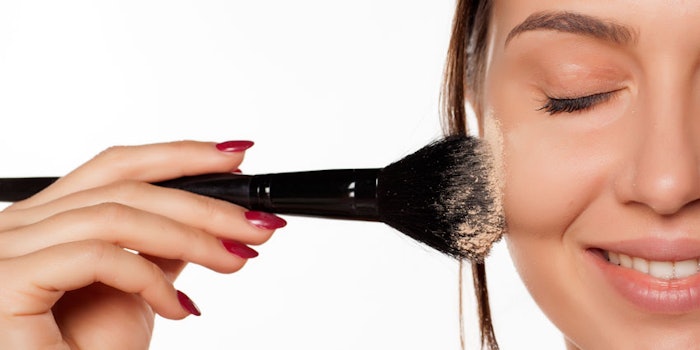
Unilever inventors have disclosed, in a recent patent application, a cosmetic powder base that prevents caking and easily spreads on skin.
According to this patent application, when topical base compositions are powdery, they have a tendency to cake. This poorly influences the in situ preparation of the skin care product by user as well as the appearance of product itself.
In addition, the sensory application of the final skin care product is critical to the consumer. For these reasons, among others, the current inventors sought to solve the caking problem of powdery base compositions without compromising the spreading and sensory characteristics of the final product.
The Literature
Powdery base composition
WIPO Patent Application WO/2019/158347
Publication date: Aug. 22, 2019
Assignee: Unilever
Disclosed in this patent application is a cosmetic powdery base composition comprising a fatty acid, an organic base, and a particle having an average diameter of 1 to 50 microns. Said organic base is capable of providing a degree of neutralization from 5% to 90% to the fatty acid, up to 100% of organic base is neutralized by the fatty acid, and the cosmetic powdery base composition is anhydrous.
The Details
Fatty acid: The fatty acid can be any suitable fatty acid, and typically contains fatty acid moieties with chain lengths from C12 to C24; most preferably, C16 to C18; and is stearic acid, palmitic acid or a mixture of the two. The fatty acid is prepared using hystric acid, which is substantially (~90-95%) a mixture of stearic acid and palmitic acid in a ratio of between 55:45 to 45:55. The fatty acid may also contain relatively pure amounts of one chain length fatty acid moiety.
Organic base: The organic base serves to form an organic base soap with the fatty acids. It is selected from the group consisting of triethanolamine, diethanolamine, monoethanolamine, triisopropanolamine, and a combination thereof; most preferably, triethanolamine. The amount of organic base should be such as to provide partial saponification of the fatty acid. It should ideally be capable of providing a degree of neutralization from 12% to 40% to the fatty acid. Most preferably, the total amount of fatty acid and organic base soap is present in an amount from 60% to 85% w/w of the powdery base composition.
Particle element: The particle most preferably comprises silica, nylon or a combination thereof and ranges in size from 2.5 to 20 microns. The particle is present, ideally, at 10% to 25% w/w of the cosmetic powdery base composition.
To solve the caking problem and/or provide a better sensory effect, the weight ratio of the particle to the total amount of fatty acid and soap is most preferably at 1:2 to 1:7 in the cosmetic powdery base composition.
Patent application accessed on Sept. 16, 2019.










